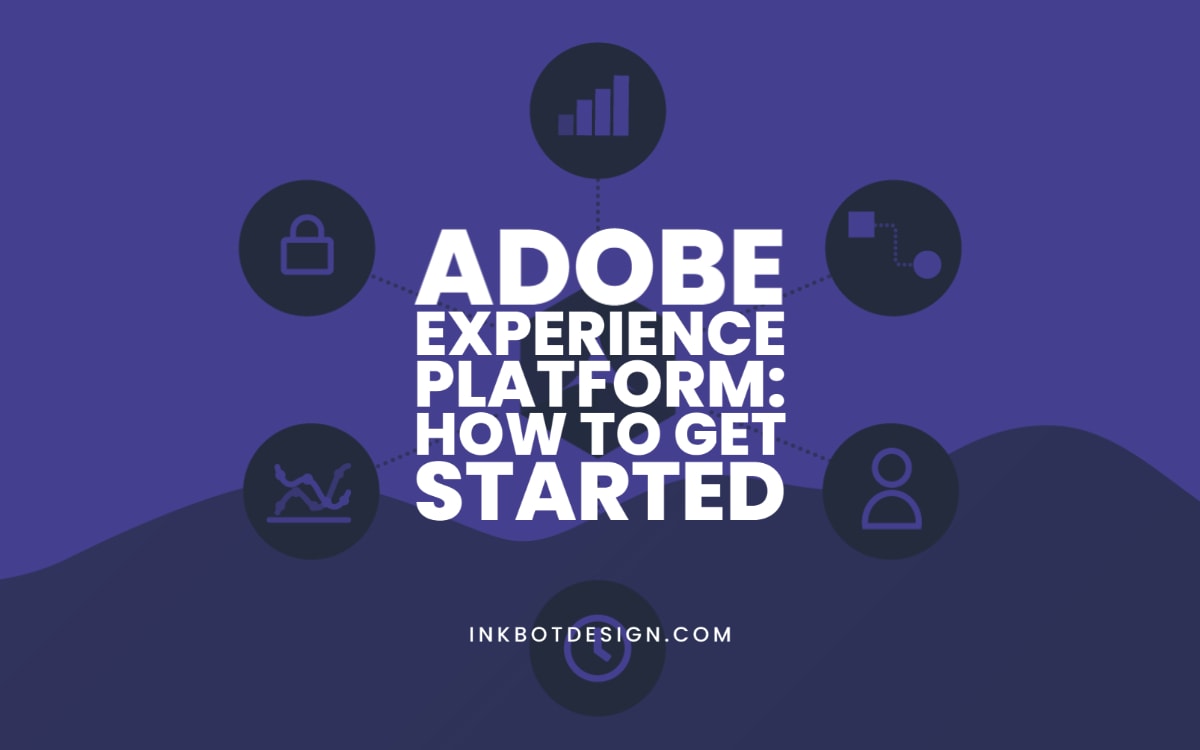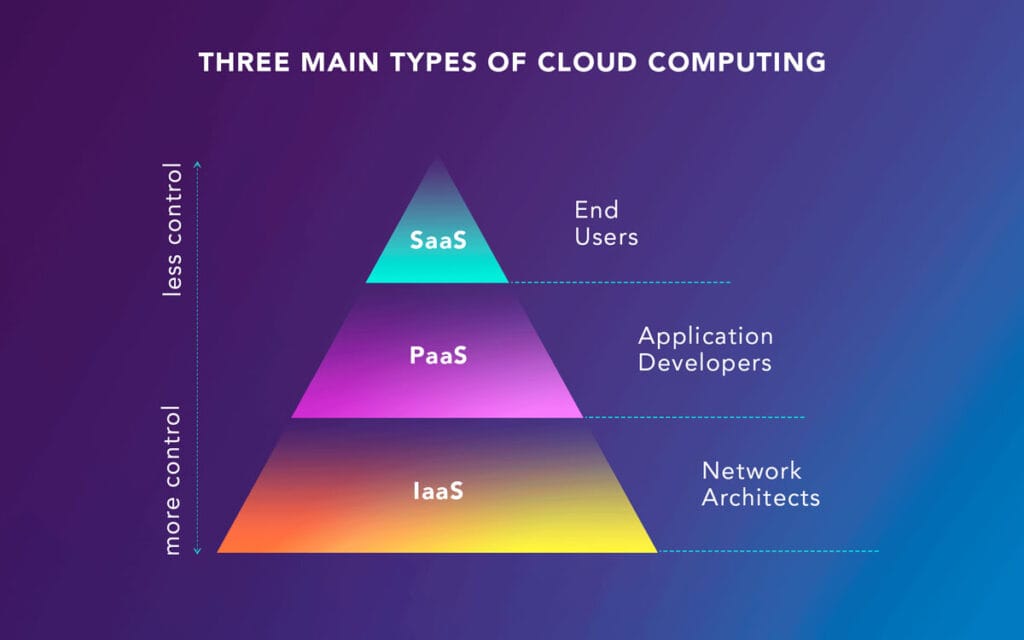
22 Apr Adobe Experience Platform: How to Get Started
Adobe Experience Platform: How to Get Started
With the Adobe Experience Platform introduction, many people have questions about what it is and whether it is for them.
Here, we will break down all of the main things you need to know about Adobe’s cloud computing platform. And we’ll answer your top 6 questions to get you started with the Adobe Experience Platform.
Cloud Computing: An Explainer
Before getting into the nitty-gritty of getting started with the Adobe Experience Platform, it’s essential to know what exactly cloud computing is.
Essentially, cloud computing involves services delivered over the internet. Typically these are delivered on-demand. They are also often offered on a pay as you go basis.
Typical cloud computing services include things like data storage, processing power, and networks. However, they can include anything from basic office applications to full-blown artificial intelligence.
This means that companies can save money on costly data centres. It also removes the need for investment in extensive levels of their own IT infrastructure.
Besides basic cost-saving measures, businesses can connect to experts in the complex field of IT infrastructure.
This is important as smaller businesses can benefit from the economies of scale achieved by these service providers. Moreover, they can tap into these services as and when they need to.
Cloud computing is here to stay
Cloud infrastructure spending reaching over a third of worldwide spending on IT in 2020. Moreover, spending on more traditional forms of in-house IT spending has seen a steady decline.
With the effects of COVID-19, which means more and more businesses rely on home-working, this trend is likely to continue.
Also, many service providers are moving to a cloud-only model as they can benefit from subscription sales compared with one-off sales associated with individual licensing agreements.
Types of Cloud Computing
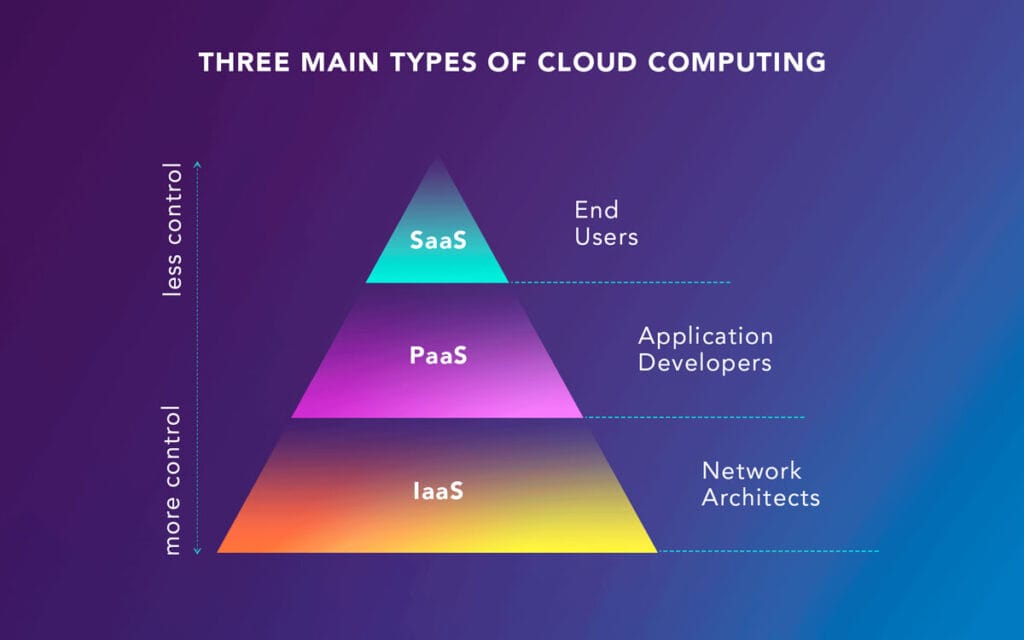
Ultimately, there are two main types of cloud computing. These can be broken down into an infrastructure type service model and a platform-type service model.
Infrastructure-as-a-service (Iaas) models refer to rentals of physical and virtual services and things like storage and networking.
This type of service tends to be chosen by companies looking to build and maintain control of applications.
The platform-as-a-service (PaaS) model refers to higher-level resources. This includes the sorts of support offered by IaaS.
However, in addition, it involves middleware, operating systems, support with database management, and even things like development tools.
The benefits of cloud computing
The benefits of cloud computing are numerous and varied and will depend on the specific service used.
As already alluded to, there can be significant cost savings from switching to a cloud computing model. However, cloud computing has also been associated with improved innovation.
This is because it opens up access to the latest software on demand, rather than on constant costly updates of applications and operating systems.
In turn, this frees up firms to bring projects to fruition faster with fewer upfront costs. For example, if you can bring projects to life quicker, lengthy procurement costs can be avoided whilst better tested.
However, cloud computing is not always cheaper and may be costly to migrate existing data to a cloud-based service. As such, it is crucial to consider the specific benefits of services for your own specific business needs.
6 Questions to help you understand the Adobe Experience Platform
Now we understand a little more about cloud computing and its potential benefits. But where does the Adobe Experience Platform fit in?
Here, we outline six questions that can help you understand more about the Adobe Experience Platform. And what the Adobe Experience Platform can do for you.
1 – What is the Adobe Experience Platform?
Customer experience is vitally important in any customer-focused business. Indeed, it is regularly considered as more important than the price or quality of a product.
If a customer has a positive interaction with a brand, advertisement, or purchase, this will increase the chances of the customer returning.
Part of the Adobe Experience Cloud is the Adobe Experience Platform. This is Adobe’s latest offering for customer experience management.
Following on from other companies, it aims to simplify and improve on Customer Relationship Management (CRM) and Data Management Platforms (DMP).
These older forms of customer management software are more static databases. They usually use online or offline data and are limited to specific data types (behavioural, cookies, financial, demographic).
The Adobe Experience Platform aims to move forward to a 360-profile for each customer with real-time data. It achieves this by taking in data from a wide range of databases, cleaning and sorting it, and attaching it to a unique profile.
Adobe calls this its Real-Time Customer Profile. It provides an up-to-date, unified, centralised profile to enable personalised interactions and experiences. This is all built around the Customer Data Platform.
2 – What is the Customer Data Platform, and how does it work with the Adobe Experience Platform?
At the heart of this, the Adobe Experience Platform is the Customer Data Platform (CDP). The CDP is the software that enables the linking of disparate data sets.
It is the next generation from CRM or DMP. The CDP can take offline data, such as from CRMs, and combine it with online data typically used by DMPs.
With behavioural, transactional, and browsing data, joining the demographic data gives a much fuller picture. This also makes it a much more helpful tool. While it requires some preparation of existing data sets, the advantages are enormous.
This is because the CDP allows for a greater level of personalisation. In turn, this makes engaging customers easier than was previously available.
This has significant advantages for a holistic approach to advertising or customer management. Using the CDP, you can approach customers through social media, website ads, e-mail, direct mail, and call centres.
What is more, the Customer Data Platform has significant benefits for solid data governance.
There are a host of new regulations and growing customer expectations about data governance compliance. Therefore companies need to be on top of their data transparency and privacy.
Having all the data stored in one place through the CDP allows for easier data management. Adobe also offers tools that enable the tracking of data across different channels.
The Customer Data Platform in Adobe’s Experience Platform can function with the Experience Data Model (XDM). The XDM allows the flow of data between different databases through a process of cleaning and standardisation.
Where data was previously siloed, leading to piecemeal profiles, the XDM facilitates a unified Real-time Customer Profile. The XDM is what sets Adobe’s Customer Data Platform apart from others on the market.
3 – How does real-time data improve the Adobe Experience Platform from previous models?
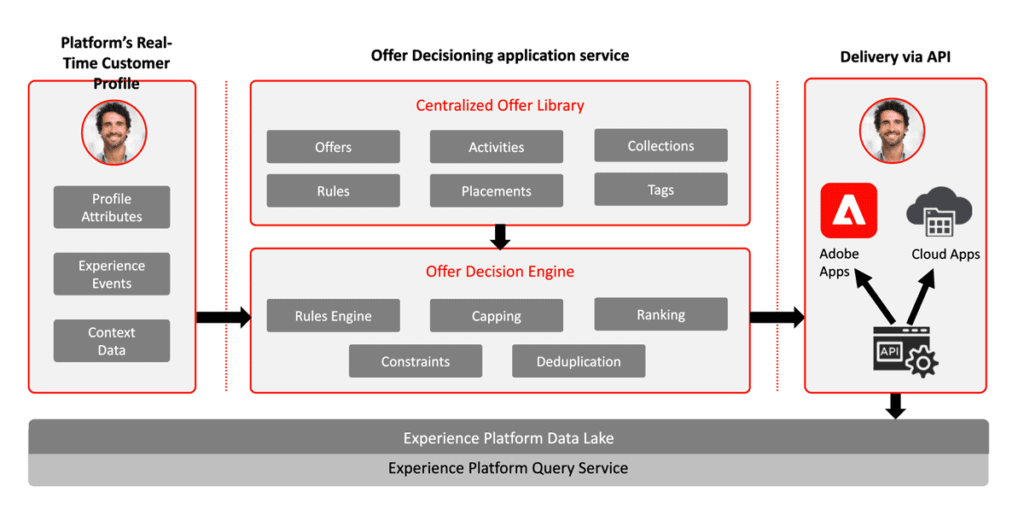
As mentioned earlier, the focus upon customer experience is paramount.
Having data that corresponds to a customer’s real-time actions is a large part of achieving positive experiences. With a delay of approximately 24-36 hours, the previous offering from Adobe failed to deliver on this.
While the Adobe Experience Cloud had significant advantages, this delay held it back. The introduction of the Adobe Experience Platform and the Real-time Customer Profile changes that.
All customer engagement across e-mail, calls, advertisements, or social media is now powered by real-time information.
It knows whether someone has switched providers or purchased a product. It knows if someone is in the market for a particular service.
This increases the ability of the user to employ accurate customer information and increases personalisation.
4 – What is the connectivity of Adobe Experience Platform with Adobe and non-Adobe products?
Unsurprisingly, the Experience Platform works well with other products within the Adobe ecosystem.
It is designed to function with either the likes target or campaign target.
The Real-time Customer Profile can also operate in combination with these other types of software. What is exciting is how the Experience Platform can work with non-Adobe products.
The Adobe Experience Platform is built on an open API (Adobe IO) framework. This means it is not a closed-off system, unable to work with other software and apps.
Employing REST APIs, the Adobe Experience Platform can work with Excel, Microsoft Power BI, Tableau, Looker, and Qlik.
What is even more exciting is the Data Science Workspace. The Data Science Workspace offering from Adobe for designers and data engineers to work with the software.
It allows access to Adobe’s immense computing power, including its machine learning and AI. As well as helping data scientists access tools to overcome the mundane. This frees up time for meaningful insights to be gathered.
In the Data Science Workspace, those with sufficient knowledge can even design integration with external software or apps. This flexibility enables faster, more connected software.
5 – Overall, what are the main advantages of the Adobe Experience Platform?
“It makes it easier to build a new product when we build it on top of our platform, but we also want to combine them in ways that we haven’t anticipated yet. So that when third-party developers come along and build something on top of our platform, they can solve problems that we didn’t even think about, use cases that we didn’t enumerate, or workflows that we didn’t describe,”
Explains Oliver Goldman, Technical Advisor to the CTO at Adobe.
Lots of people have welcomed Adobe’s upgrade to its Experience Cloud. The ability to collate real-time data from numerous channels is allowing businesses to up their customer experience game.
Whether you’re using the Adobe Experience Platform for marketing, advertising, customer experience, or analytics, it has so much to offer.
Standardisation and simplification are at the heart of the Adobe Experience Platform.
The Real-time Customer Profile allows you to build a 360-degree profile of a customer. Different types of information were previously soiled in different spreadsheets or databases. It is now immediately accessible.
This has great benefits for communication with customers. It also allows for improved data governance. The focus upon connectivity with other software is likely to allow the Adobe Experience Platform to improve as it is developed.
6 – What are the key features of the Adobe Experience Platform?
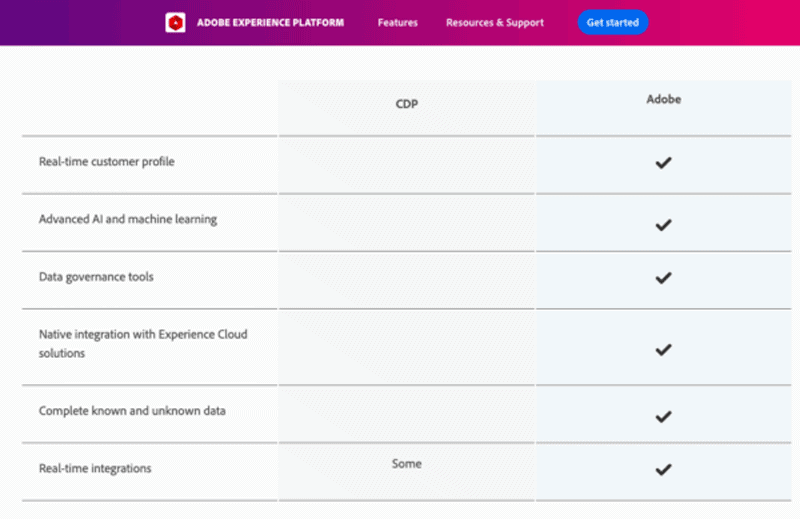
To update and maintain your customer data in real-time, the Adobe Experience Platform uses Adobe Sensei.
This highly advanced artificial intelligence uses finely tuned machine learning algorithms that automate tasks whilst improving customer experiences. It can also make insightful predictions based on this improved customer data.
Another great feature of the Adobe Experience Platform is its functionality and features for data scientists. For example, it provides a built-in experience query service that helps data analysts draw disparate information and make complex queries simple.
By providing a single place for all your data to be processed, the Adobe Experience Platform also helps make the complex simple.
It does this by bringing together your transactional data and interaction data from across your commercial platforms.
These features ensure you can target customers with experiences that are increasingly tailored. Be it through improved understanding of customer behaviour, managing customer relationships through CRM software, or cutting through at that Point of Sale moment.
Indeed, one of the best features of the Adobe Experience Platform is its ability to help you maximise your reward from the data you keep.
Conclusion
Cloud computing has numerous benefits for all ranges of businesses. As well as often significant cost savings associated with the switch to a cloud computing model.
Cloud computing can unleash innovation by providing access to the latest software, apps, and expertise on-demand.
Since its launch in 2019, the Adobe Experience Cloud has gone from strength to strength. This includes support large and small.
From supporting the use of APIS to build organisational capabilities in customer experience management. To automatically updating customer information in real-time.
The Adobe Experience platform is built for data scientists to ensure you can turn the data you keep into business rewards.
